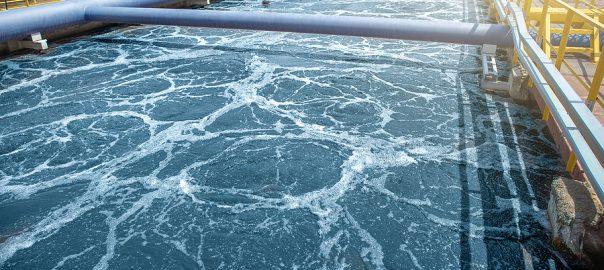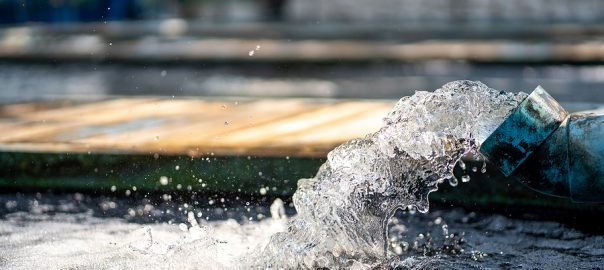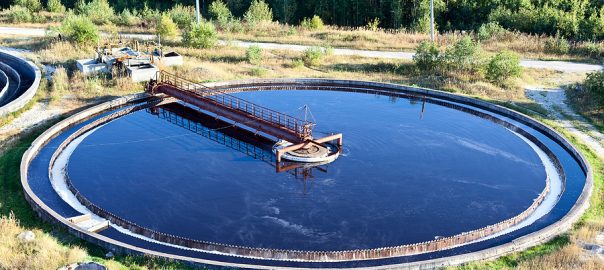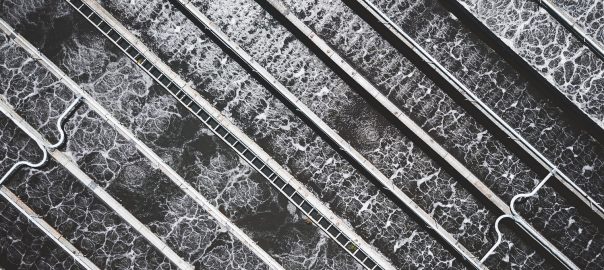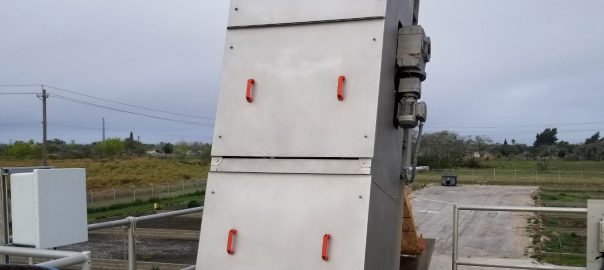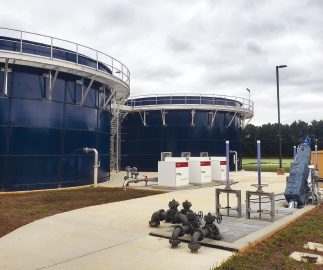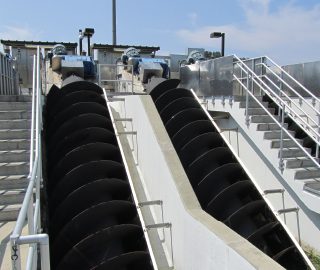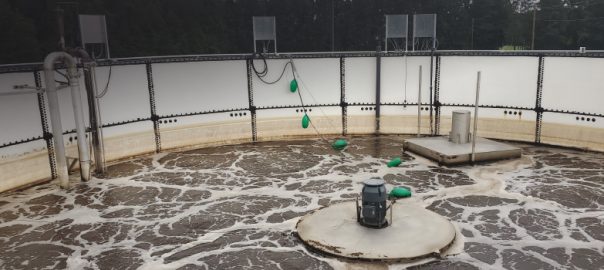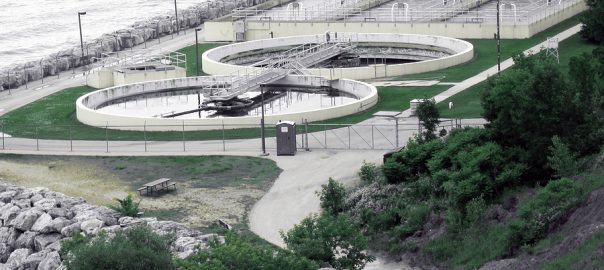
In the U.S. alone, there are over 16,000 publicly-owned wastewater treatment facilities. Those plants treat around 34 billion of wastewater every day. Yes, that’s billions, not millions, per day. About 75% of U.S. households have their sewage treated at a municipal wastewater treatment plant, and the heart of any treatment process is to separate the water from the waste products.
It’s clear what happens with water once it’s cleaned and meets EPA guidelines for release back to a water source or water treatment plant for household use, but what about the sludge? Where do the solids end up? It comes down to integrated approaches between wastewater clarifiers and sludge management.
Wastewater Clarifiers: Understanding Their Role in Wastewater Treatment
When wastewater enters a facility from sewer lines or septage haulers, it’s a messy mix of solids, water, and even trash. Solids like plastic, flushable wipes, food particles, lint, dirt/grit, toilet paper, and feces have to be separated.
Trash rakes can remove items like plastic applicators, toys that children flush without realizing how bad that is, and other pieces of trash. This equipment can also capture things like bones of animals that died in the sewers or that came in from food manufacturing plants.
The remaining wastewater continues to clarifiers where filters capture solids and sludge sinks to the bottom for easier removal. The remaining water moves to additional treatment steps. There are also different clarifiers:
Primary:
Primary treatment begins with sewage entering the plant and passing through screens and trash rakes. It then moves to a grit chamber to remove items like pebbles, sand, and other gritty particles that could damage seals and mechanical aspects of the wastewater treatment equipment.
Secondary:
Secondary treatment is beneficial for removing some of the harmful contaminants and nutrients found in wastewater. Wastewater may pass through trickling filters to help capture some of the pollutants, bacteria, and chemical hazards. PCBs are a newer concern.
Another aspect of secondary treatments is the use of activated sludge, which adds oxygen and encourages microorganisms to digest some of the tiny particles of sludge, which speeds up the treatment process.
Tertiary:
It used to be that primary and secondary clarification processes were enough. That’s no longer the case. Tertiary is used to help remove non-biodegradable pollutants like nitrogen and phosphorus. This is especially important as those two items are known for increasing the growth of algal blooms in lakes, rivers, and other water sources. Algal blooms harm fish and wildlife.
Tertiary clarification also helps remove dissolved salts, heavy metals, parasites, and viruses that secondary clarification measures couldn’t remove.
As sludge settles throughout the clarification process, you have all of that sludge and solids that must be managed. This is where a sludge management plan is essential.
Sludge Management: Regulatory Concerns and How It’s Managed
All wastewater treatment plants have a permit from the EPA that regulates the amount of different minerals, chemicals, and metals that can remain in the water that’s released. Staying within these limits is essential for avoiding fines. The same requirements are in place for any sludge.
Sludge ends up being used in one of three ways. Some plants send it to landfills where it joins other trash. It can be composted and eventually used to provide nutrients to plants and trees in fields and forests. It can also be burned in incinerators.
With wastewater treatment, the breakdown of sludge as microorganisms feed off tiny articles does release methane. That methane can be captured and used as an alternative fuel for heating and cooling the buildings in a wastewater treatment plant, which is a great way to use the resources created from treatment processes.
When the sludge is going to be used for land application, it must first be tested to make sure that the arsenic, cadmium, copper, lead, mercury, molybdenum, nickel, PCBs, selenium, and zinc levels do not exceed maximum concentrations.
In addition, land application requires pathogen controls to meet Class A or Class B rules. Class A applies to sludge that is applied to home gardens and lawns. Class B is only offered if the sludge fertilizer will not come into contact with food crops for grazing pastures for a specified period. Once a farm or ranch uses sludge as a fertilizer, it may be upwards of three years before anything is allowed to grow in that field, or animal fodder can be harvested from it.
In 2022, the Michigan Department of Agriculture and Rural Development found that an area farm had used untreated sewage for fertilizer. The resulting crops were sold to grocery stores and directly to consumers.
Over a dozen retailers had to tell shoppers to stop using the cabbage, cucumbers, eggplant, green beans, onions, peppers, summer squash, sweet potatoes, tomatoes, and zucchini that the stores had sold due to the risk of e. coli, hepatitis A, norovirus, and rotavirus. That’s why it’s so important to follow EPA guidelines.
The Future of Sludge Management
With AI and automation increasing in use, it’s only going to get easier to remove as much sludge as possible and ensure that it’s managed properly. Whether you use it for power generation or sell it as fertilizer, you’ll benefit from having AI continually test and analyze results to tell you when it’s optimal to move to the next stage.
Another benefit of AI is that it can closely track flow rates and increase pumps and motors to avoid having your plant flood during a long storm or be forced to release untreated sewage into the environment. If something is wrong, AI could divert lines to ensure extra wastewater goes to holding tanks until things calm down.
For many years, other countries have used cow patties to make bricks and build homes. The reuse of purified sludge as concrete filler, concrete aggregates, and brick-making materials is another trending use. It’s an eco-friendly way to use sludge and stop taking up valuable space in landfills.
The Best Approaches For Integrating Clarification and Sludge Management
When you’re establishing a wastewater treatment facility or upgrading your equipment, you want to make sure you follow the EPA’s guidelines. You also need to follow state regulations. It’s best to work with experts in wastewater management equipment to ensure you’re creating a feasible, efficient, cost-effective system that removes sludge as quickly as possible and uses that sludge as a valuable resource.
It’s also best to work with manufacturers and industrial plants to ensure they’re pre-treating wastewater. It reduces the burden on your plant. If you have three poultry processing plants nearby, the number of bone fragments, feathers, and fatty tissue will drive up water treatment costs, which makes locals unhappy as rates increase. Make sure area businesses are doing their part.
As weather patterns keep shifting and leading to storms of unprecedented levels, wastewater treatment plant owners and operators need solutions that separate sludge and treat wastewater quickly and effectively. Raw sewage releases during heavy rainfall aren’t good for the environment’s animals, people, and aquatic life.
Make sure your plant is ready for the future. Recover valuable resources, protect the planet, and do all of this while reducing overall costs. Lakeside Equipment can help you develop a sustainable, efficient sludge management process. With close to 100 years in water treatment, we have the insights and equipment your plant needs for optimal performance.

